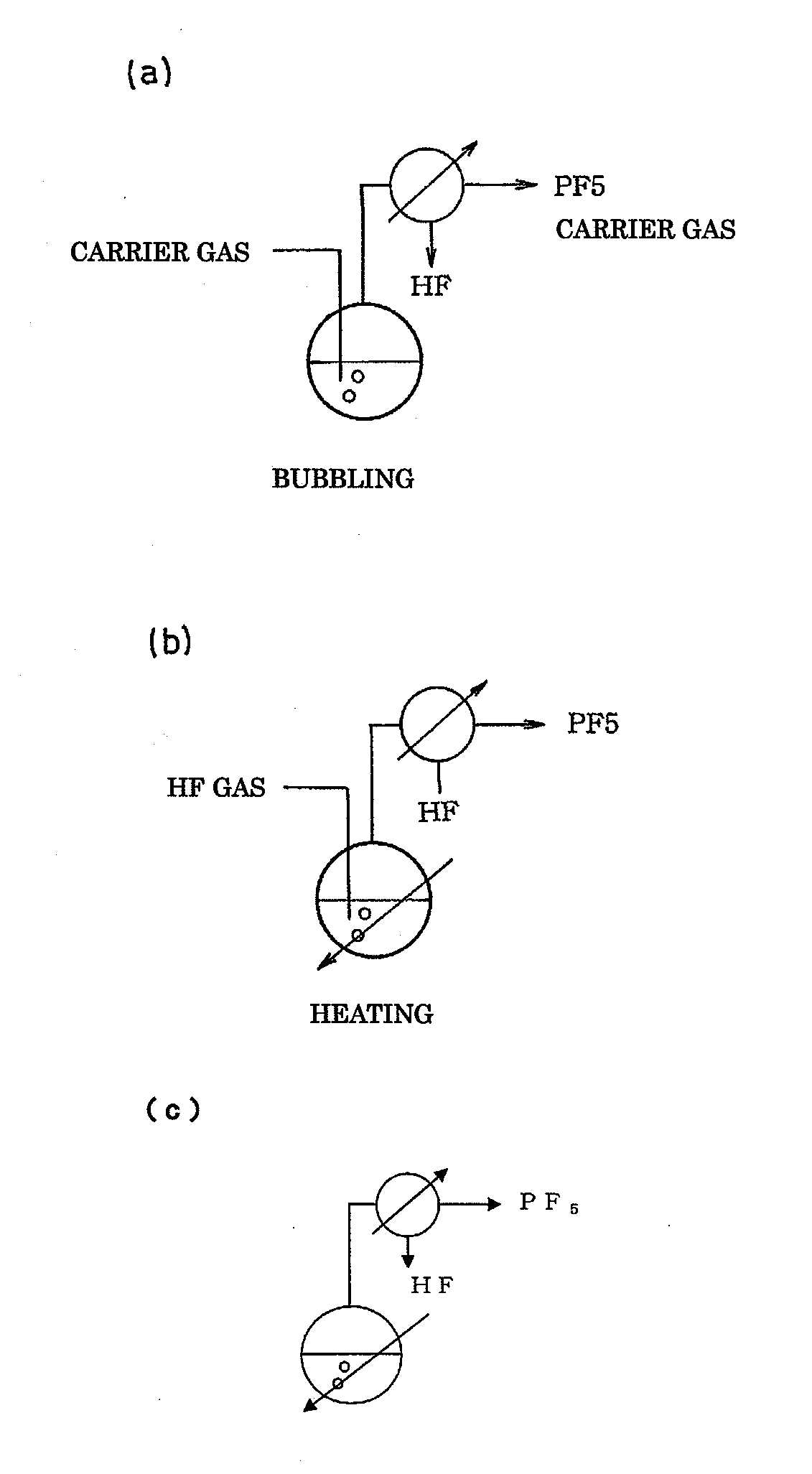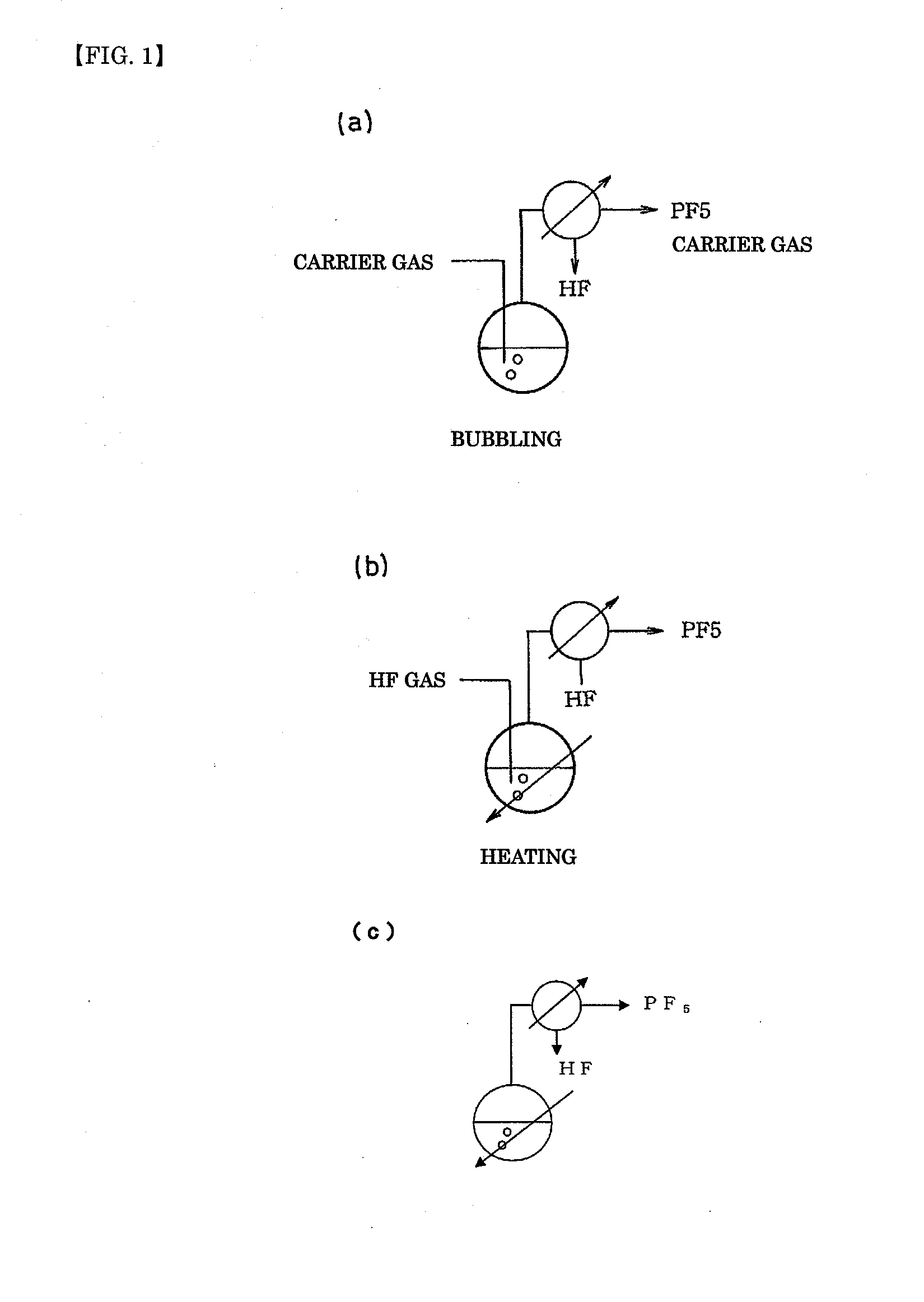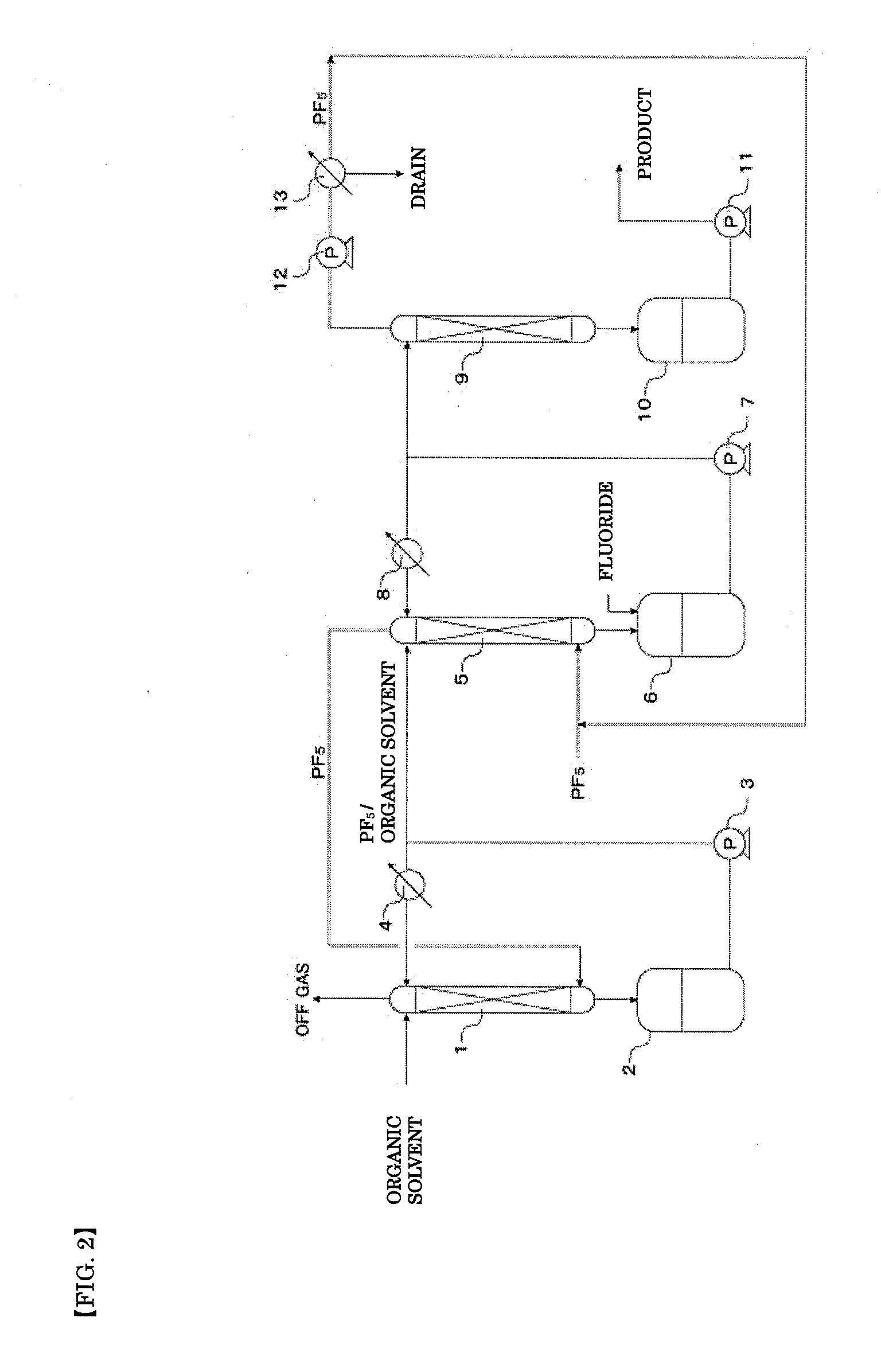Processes for producing phosphorus tetrafluoride and phosphate hexafluoride
a technology of phosphorus tetrafluoride and phosphate hexafluoride, which is applied in the direction of sustainable manufacturing/processing, secondary cell servicing/maintenance, and final product manufacturing, can solve problems such as purity drop, and achieve high purity and purity high
- Summary
- Abstract
- Description
- Claims
- Application Information
AI Technical Summary
Benefits of technology
Problems solved by technology
Method used
Image
Examples
example 1
[0099]Into a 5-L reaction tank made of fluorine-contained resin were put 200 g of a commercially available 75% phosphoric acid solution in water and 2000 g of anhydrous hydrogen fluoride (HF) together with a rotator, and the reaction tank was connected to a reflux condenser (20 mm in diameter×2 m) made of stainless steel. The fluorine-contained resin reaction tank was heated to 45° C. in a water bath while the reflux condenser was cooled with brine of −30° C. Furthermore, a magnetic stirrer was used to stir the reaction liquid. When the bath temperature was raised, the reflux of HF was started. At this time, the temperature of the inside liquid was 22° C.
[0100]After 5 minutes, a gas was generated from the outlet in the reflux condenser. This gas was analyzed by FTIR. As a result, it was verified that the gas was made of PF5 and a small amount of HF. In the generated gas, phosphorus oxyfluorides, such as POF3, were not detected.
[0101]For the simultaneously generated gas, into a 1-L r...
example 2
[0104]Into a 5-L reaction tank made of fluorine-contained resin were put 200 g of a commercially available 75% phosphoric acid solution in water and 2000 g of anhydrous hydrogen fluoride (HF) together with a rotator, and the reaction tank was connected to a reflux condenser (20 mm in diameter×2 m) made of stainless steel. The fluorine-contained resin reaction tank was kept at a constant temperature of 20° C. in a water bath while the reflux condenser was cooled with brine of −30° C. A magnetic stirrer was used to stir the reaction liquid. Furthermore, the liquid in the fluorine-contained resin reaction tank was bubbled with nitrogen gas at 2 L / minute.
[0105]A gas generated from the outlet in the reflux condenser was analyzed by FTIR. As a result, it was verified that the gas was made of PF5 and a small amount of HF. In the generated gas, phosphorus oxyfluorides, such as POF3, were not detected.
example 3
[0106]Into a 5-L reaction tank made of fluorine-contained resin was put 200 g of a commercially available 75% phosphoric acid solution in water together with a rotator, and the reaction tank was connected to a reflux condenser (20 mm in diameter×2 m) made of stainless steel. The fluorine-contained resin reaction tank was kept at a constant temperature of 20° C. in a water tank while the reflux condenser was cooled with brine of −30° C. A magnetic stirrer was used to stir the reaction liquid. Furthermore, anhydrous hydrogen fluoride in a gas form was introduced at 150 g / minute into the phosphoric acid solution in the fluorine-contained resin reaction tank.
[0107]A gas generated from the outlet in the reflux condenser was analyzed by FTIR. As a result, it was verified that the gas was made of PF5 and a small amount of HF. In the generated gas, phosphorus oxyfluorides, such as POF3, were not detected.
PUM
| Property | Measurement | Unit |
|---|---|---|
| temperature | aaaaa | aaaaa |
| concentration | aaaaa | aaaaa |
| hygroscopic property | aaaaa | aaaaa |
Abstract
Description
Claims
Application Information
 Login to View More
Login to View More - R&D
- Intellectual Property
- Life Sciences
- Materials
- Tech Scout
- Unparalleled Data Quality
- Higher Quality Content
- 60% Fewer Hallucinations
Browse by: Latest US Patents, China's latest patents, Technical Efficacy Thesaurus, Application Domain, Technology Topic, Popular Technical Reports.
© 2025 PatSnap. All rights reserved.Legal|Privacy policy|Modern Slavery Act Transparency Statement|Sitemap|About US| Contact US: help@patsnap.com



